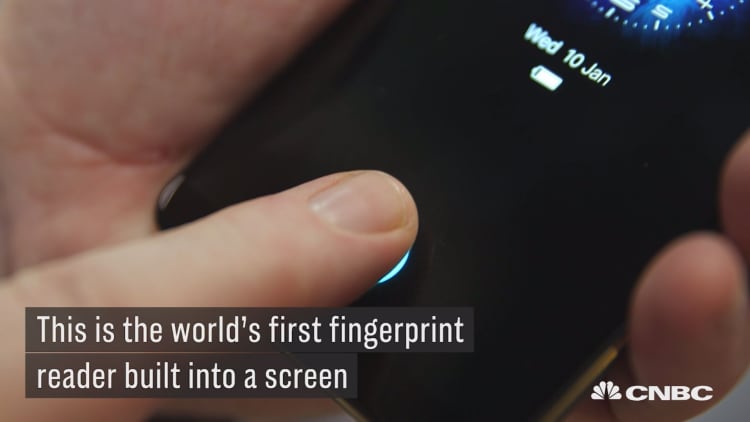OnePlus announced the OnePlus 6T on Monday, the first phone coming to the U.S. with a fingerprint reader embedded inside the screen. It's one example of how Android makers are playing catch-up to Apple's Face ID technology.
Apple proved with Face ID on its new iPhones that facial recognition is the easiest and most secure way to unlock and make purchases with phones. You just need to look at the phone for a split second and it verifies you're the proper owner.
Face ID has an added benefit: it allows Apple to expand the size of the screen on its phones and remove the home button entirely. Face ID is even expected to make its debut in new iPads on Tuesday.
Android makers haven't been able to replicate Face ID in a way that's just as fast or secure.
Some Android phones have facial recognition systems, but they're often used as a shortcut for unlocking the phone and aren't as secure as fingerprint readers. More secure options, like iris scanning on Samsung phones, aren't as fast. To expand the size of displays, Android makers have switched to putting fingerprint readers on the back of phones, which can be clunky.
OnePlus' strategy to hide the fingerprint reader inside the screen gives the company some of the advantages Apple has with Face ID, like the ability to fit as much screen on the front of the phone as possible. It's also quick, and a user doesn't need to feel for the fingerprint reader on the back of a phone. It's a much cleaner way of verifying a user.
Here's what it looks like:
When it's not in use, the fingerprint reader vanishes. It can prevent users from accidentally smudging the rear camera, and enables phone makers to continue to stretch the screens to cover almost the entire front of the phone.
It works well and usually unlocks the phone in a split second, though it doesn't seem to be as instantaneous as Apple's Face ID facial recognition on the new iPhone XS. The fingerprint sensor can also be used for payments through Google Pay and other e-commerce applications that require a user's verification before payment.
It's the future of user identification on Android phones. Samsung, the world's largest maker of Android devices, is planning to add an embedded fingerprint sensor in its 2019 flagship phone, the Galaxy S10, Bloomberg reported Friday.
OnePlus' sister company, Oppo, added the same feature into the R17, a nearly identical phone, earlier this year. Popular Chinese phone maker Huawei also included the option in its new Huawei Mate 20 Pro, which was announced earlier this month. Neither of those phones are sold in the U.S., however. The video below shows a similar example on another phone built by Vivo.
The OnePlus 6T is a newer model of the OnePlus 6, which was launched in May. It offers a larger display with a smaller notch at the top, but is otherwise very similar to its predecessor. It launches online and through T-Mobile on Nov. 1 and will start at $549. It's the first time China-based OnePlus has managed to sell a phone through a U.S. carrier.



